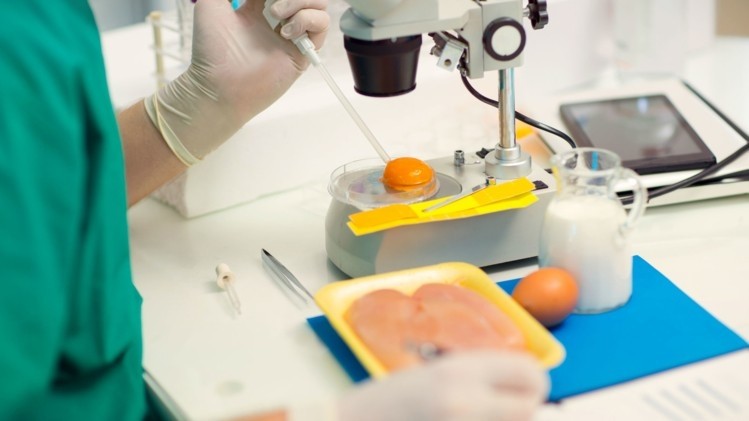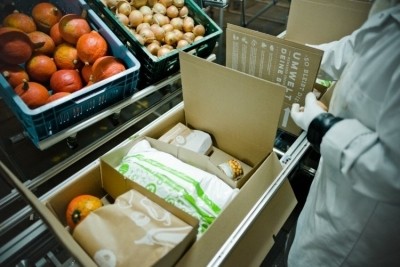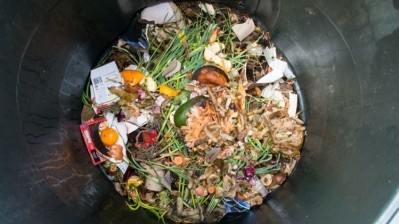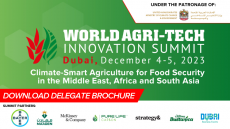Singapore scientists claim plant-based product a ‘game-changer’ for clean label preservation

NTU Food Science and Technology Director Professor William Chen spoke to FoodNavigator-Asia about the inspirations and background surrounding his team’s breakthrough discovery of the all-natural, clean label preservative.
“It is definitely a game-changer, and will bring enormous benefits for consumers. […] I’m very proud, very happy – This could be our best piece of work so far!” enthused Prof Chen, who is based at NTU’s School of Chemical and Bioengineering.
The preservative in question is naturally synthesised by S. cerevisiae, a species of yeast. It boasts all-natural antimicrobial and anti-oxidant properties, and has been shown to keep food fresh for a significantly longer time than commercial artificial preservatives.
The types of foods tested were fresh foods, such as meat slices and squeezed fruit juice. The experiment was conducted at room temperature, and the plant-based food preservative was found to keep the foods fresh for two days.
Samples treated with commercial-grade artificial food preservatives showed bacterial contamination within roughly six hours.
Prof Chen added: “As a matter of fact, when we checked on the samples after two days, the amount of contamination we saw in the [other] samples looked similar to that of the control group’s.”
One of the bacteria that was tested for was S. aureus, a microbe known to cause food poisoning via the infection of both fresh and processed foods.
The compound’s powerful preservation properties actually come from a combinatory synthesis of four flavonoids: Naringenin, phenylacetaldehyde, phloretic acid and homogentisic acid.
“Naringenin was our initial targeted product, but for this to work as a preservative, it must be a combination of all four of these flavonoids, which are all produced in the same pathway,” explained Prof Chen.
An extra benefit of the preservative is its antioxidant properties, which even pure flavonoids (e.g. commercially available pure naringenin) cannot compare with, let alone other artificial preservatives.
“When it comes to E-numbered food preservatives, these generally do not show any antioxidant activity at all,” added Prof Chen.
Inspirations and backstory
“It all started with a philosophy to enhance food security in Singapore,” said Prof Chen.
“90% of food in Singapore is imported, making food security a prime concern. We at NTU decided to delve deeper into the processing technology aspect of food security, as we found it to be the right fit for our expertise.”
As part of the Food Science and Technology (FST) programme (which Prof Chen is the director of) co-operation was already in place with Dutch university Wageningen University.
Wageningen holds one of the global top spots for food science and technology. A famous example was a study on growing plants on Mars soil, which inspired Hollywood blockbuster movie The Martian.
The FST programme revolved around the vision to create a ‘zero-waste food processing circular economy’, which would minimise food wastage, improve health and propel food technology forward.
“From a proof-of-concept level, we already achieved this zero-waste cycle,” commented Prof Chen in reference to previous studies from both universities.
“The next step forward was to extend the shelf life of products, which thus led to looking at preservation.”
Taking consumer concerns over artificial preservatives into consideration, the aim was not to look for a replacement artificial preservative, but for the organic solvents used to chemically synthesise these.
Flavonoids are not naturally antimicrobial. They are present in a number of plants, responsible for colour. It is only when the plants are placed under stress, e.g. attached by microbes that these are modified to become antimicrobial via a process called prenylation.
“However, prenylated flavonoids are however harmful to the body’s endocrine system, so we had a real Catch 22 situation on our hands,” said Prof Chen.
Wageningen had already completed some research on prenylated flavonoids, and the NTU research team was trying to further that by first synthesising flavonoids in yeast, then introducing the prenylation mechanism.
The prenylation didn’t work out, but instead the team got what Prof Chen dubs “an unexpected surprise”.
“Our initial intention was certainly not to replace chemical preservatives, so it was a real bingo moment for us when we tried the synthesised flavonoid as a preservative,” he said.
“We didn’t even have to extract it from the yeast, as it was secreted naturally. […] It’s all natural, so this can alleviate fears of genetic modification in the public,” he added.
Entering the preservatives market
The preservative has caught the attention of multiple food companies, with intellectual property (IP) discussions already in progress.
“The limiting factor when it comes to enter the market is probably cost,” said Prof Chen. “Consumers are very accepting of things that are natural, but very wary of the cost factor.”
One way to overcome this, he said, is to work with partners in the food industry.
“So far I’ve been lucky when it comes to industry partners,” he said.
“What I want to do is work with these food industry partners to up the scale of production, so that hopefully this preservative can become more comparable in pricing to chemical ones.”
Replying to whether possible complications of the synthesis process would hinder cost-lowering, Prof Chen was very confident that this is not so.
“It is definitely not harder to synthesise and produce as compared to artificial preservatives, as there are no extra steps involved in extraction, separation and purification of the product after the yeast synthesises and secretes it,” he explained.
Commercial potential
Flavonoids are already used as natural health supplements currently, boasting anti-inflammatory, anti-diabetic and anti-cancer properties.
As such, the key characteristics that give this plant-based preservative such enormous potential are its all-natural factor, the additional health benefits it can provide - and one more interesting extra.
“It actually tastes pretty good,” said Prof Chen. “I tried it myself, and it’s got a good flavour to it, especially the aftertaste.”
“At the first taste, it’ll start out somewhat spiky, like when you’re eating an onion, but then it develops into a fruity taste.”
As such, this discovery seems to have all the bases covered, despite today’s consumers showing increasing demand when it comes, whether it be in the areas of health consciousness or high food quality.
But this is not a one-size-fits-all solution that can be used magic bullet for preservation, says the professor.
“Don’t forget, this preservative was produced on yeast, so it definitely does not have anti-fungal properties,” he clarified.
“What it can do is to hopefully replace current artificial chemical preservatives in the market that are anti-bacterial or anti-oxidant.”
Future work
The team hopes to work with more food companies to finetune the application potentials of this discovery.
“There is a lot more to discover. We also want to investigate [its] antimicrobial and antioxidant mechanisms, as well as any possible side effects that may occur when it comes into contact with other food ingredients,” said Prof Chen.
“This discovery will definitely aid in the production of new food products to suit the changing lifestyle today, including ready-to-eat processed foods. Its being natural will also certainly add to the overall appeal.”



















